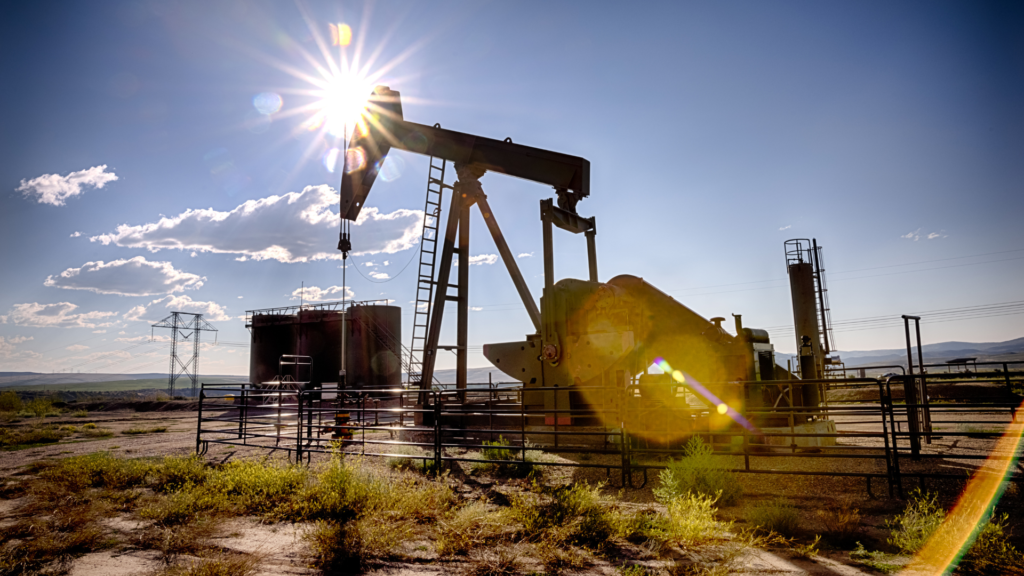In the realm of investment opportunities, oil and gas minerals have long been a cornerstone of wealth creation and preservation. The extraction and exploration of these valuable resources are integral to the global energy sector, and savvy investors have consistently found success in this domain. In this blog post, we will explore the intricacies of investing in oil and gas minerals, highlighting the potential rewards, associated risks, key considerations for prospective investors, and the growing interest from institutional investors.

Understanding Oil and Gas Minerals
Before diving into the investment aspects, it is essential to grasp the concept of oil and gas minerals. Minerals, in this context, refer to the ownership rights to extract and profit from underground resources, such as oil and natural gas. When an individual or entity owns these mineral rights, they are entitled to a share of the revenue generated from the extraction and sale of these resources.
The Potential Rewards
- Income Generation: Investing in oil and gas minerals offers the potential for significant income generation. As global energy demand continues to rise, the value of oil and gas resources remains high. This can translate into regular royalty payments, lease bonuses, and production revenues for mineral rights owners.
- Portfolio Diversification: Including oil and gas minerals in an investment portfolio can provide diversification benefits. These assets often have a low correlation with traditional financial markets, making them a valuable addition to mitigate risk.
- Inflation Hedge: Historically, commodities like oil and gas have proven to be effective hedges against inflation. As prices rise, the value of oil and gas resources also tends to increase, providing a buffer against the erosive effects of inflation.
- Long-Term Investment Potential: Oil and gas minerals can offer attractive long-term investment potential. While the energy landscape is evolving, oil and gas are projected to remain crucial components of the global energy mix for the foreseeable future. This ongoing demand suggests a sustained need for investments in the sector.
The Associated Risks
- Price Volatility: Oil and gas prices are subject to significant volatility due to factors like geopolitical tensions, supply-demand dynamics, and regulatory changes. Investors must be prepared for fluctuations in market conditions, which can impact the value of their mineral rights.
- Regulatory and Environmental Factors: The oil and gas industry is subject to complex regulatory frameworks and environmental considerations. Changes in regulations or increased focus on sustainability can affect the profitability and viability of oil and gas investments.
- Geological Uncertainty: The exploration and extraction of oil and gas reserves are inherently uncertain activities. Geological risks, such as dry wells or limited reserves, can impact the profitability of mineral rights investments.
Key Considerations for Investors
- Thorough Due Diligence: Before investing in oil and gas minerals, it is essential to conduct comprehensive due diligence. This includes evaluating the geological potential of the target area, understanding the legal and regulatory landscape, and assessing the reputation and track record of the operating companies involved.
- Risk Mitigation: To mitigate risks associated with oil and gas investments, diversification is crucial. Consider investing in a portfolio of mineral rights across different regions or exploring opportunities in both oil and natural gas resources.
- Seek Professional Guidance: Investing in oil and gas minerals can be complex, and it is advisable to seek the guidance of professionals with expertise in the field. Engaging geologists, engineers, and legal experts can help ensure informed decision-making and risk management.
- Long-Term Perspective: Oil and gas mineral investments typically require a long-term perspective. The exploration and extraction processes can take time, and the profitability may unfold over several years. Patience and a long-term investment horizon are key.
The Rise of Institutional Interest in Mineral Investing
In recent years, mineral investing has experienced significant growth as an asset class targeted by institutional investors. Traditionally, individual landowners or smaller investors held mineral rights, but the increasing demand for alternative investments has led institutional players to recognize the potential of this sector. Institutional investors, such as pension funds, endowments, and private equity firms, have begun allocating significant capital to mineral investments, diversifying their portfolios and seeking attractive risk-adjusted returns.
This growing interest from institutional investors has brought additional capital, expertise, and sophistication to the mineral investing landscape. The involvement of these large players has helped facilitate the development of specialized funds and investment vehicles, making it easier for both individual and institutional investors to access mineral opportunities.
Public vs. Private Investing in Minerals
When considering mineral investments, investors have the choice between public and private avenues. Each option has its own characteristics and considerations:
Public Mineral Investing: Public investments involve purchasing shares of companies engaged in oil and gas exploration and production. These can be oil and gas majors or smaller exploration and production (E&P) companies. Public mineral investments provide exposure to the industry without direct ownership of specific mineral rights. Investors can buy and sell shares on stock exchanges, and their returns are influenced by the performance of the company and broader market conditions.
Public mineral investments offer liquidity, as shares can be readily bought and sold. However, they also expose investors to the inherent risks of the stock market and the volatility of oil and gas commodity prices. These investments are suitable for those seeking indirect exposure to the sector and a more liquid investment vehicle.
Private Mineral Investing: Private mineral investing entails direct ownership of mineral rights or investments in privately held oil and gas projects. This avenue allows investors to have a more hands-on approach and potentially access higher returns. Private mineral investments often involve partnerships, joint ventures, or limited partnerships, where investors pool their capital to acquire and develop mineral rights. Returns are generated through royalties, lease bonuses, or profit-sharing arrangements.
Private mineral investments can provide investors with greater control and potential for higher returns, but they often require longer investment horizons and lack the liquidity of publicly traded investments. Investors must carefully evaluate the track record and credibility of the operators, conduct thorough due diligence, and understand the risks and potential rewards associated with private mineral investments.
Choosing the Right Fit for Mineral Investing
Mineral investing may be a suitable option for various types of investors, depending on their risk tolerance, investment objectives, and capital availability:
- Accredited Investors: Accredited investors, who meet certain income or net worth thresholds, often have access to private mineral investments. These investors have the opportunity to participate in direct ownership or private investment funds, which can offer higher potential returns but also carry greater risk. Accredited investors typically have the financial resources, knowledge, and experience to evaluate and assess the risks associated with private mineral investments.
- Institutional Investors: Institutional investors, including pension funds and endowments, often have the resources and expertise to engage in mineral investing. They seek to diversify their portfolios and capture the potential long-term growth offered by oil and gas resources. These investors can allocate significant capital and partner with experienced operators and managers in the industry.
- Experienced Individuals: Experienced individuals with a deep understanding of the oil and gas industry can actively engage in mineral investing. They may have the expertise to evaluate opportunities, negotiate deals, and manage the associated risks. These individuals often have direct ownership of mineral rights or participate in private investment partnerships.
Conclusion
Investing in oil and gas minerals presents an intriguing opportunity for investors seeking diversification, income generation, and potential long-term growth. While the industry carries risks, the potential rewards and the growing interest from institutional investors make it a sector worth considering. It is crucial to conduct thorough due diligence, seek professional guidance, and evaluate the suitability of public or private mineral
investments based on individual investment objectives, risk tolerance, and capital availability. By carefully evaluating their options and understanding the dynamics of the oil and gas industry, investors can leverage mineral investments to potentially enhance their portfolios and participate in the ongoing development of the energy sector.



